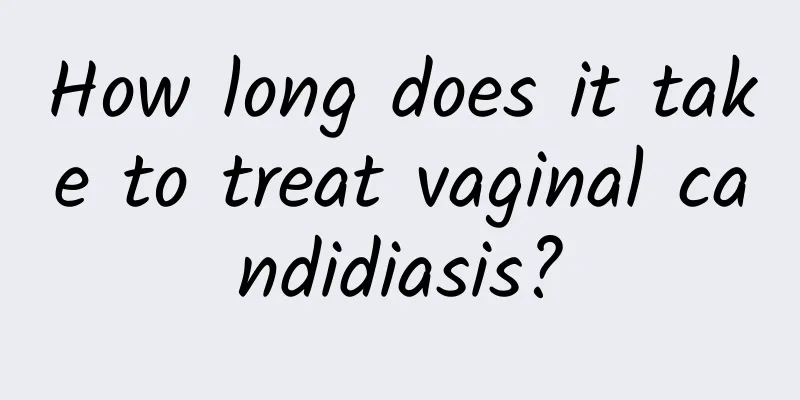Three common manifestations of uterine fibroids What are the hazards of untimely treatment of uterine fibroids

|
Uterine fibroids (Hysteromyoma) Uterine leiomyoma, also known as uterine leiomyoma, is the most common benign tumor of the female reproductive system. Most are asymptomatic, and a few present with vaginal bleeding, abdominal contact with the tumor, and compression symptoms. Multiple uterine fibroids are common in cases of pedicle torsion or other conditions that cause pain. Uterine fibroids are the most common tumor of the female reproductive system. At present, the cause is still unclear. If not treated in time, it can lead to female infertility, miscarriage, frequent urination, urination disorders and other hazards, and is the main killer of women's health. Uterine fibroids are common benign tumors in women, which can occur alone or in multiple places. According to the different locations of the fibroids, they can be divided into many different types. The following four types are common: There are four types of uterine fibroids Intramural fibroids: Uterine fibroids are more common at the beginning. The fibroids are located within the uterine muscle wall and are surrounded by the myometrium. It is the most common uterine fibroid in women, accounting for about 60-70% of all uterine fibroids. Submucosal fibroids: Submucosal fibroids account for about 10%. It is formed by the growth of intramural fibroids into the uterine cavity and directly contacting the mucosal layer. This tumor can gradually increase the deformation of the uterine cavity, and the pedicle is often connected to the uterus. For example, the pedicle is long and can block the cervix or detach from the vagina. Subserosal fibroids: Subserosal fibroids are a common type, accounting for about 20%. Intramural fibroids develop into the serosa, protrude from the surface of the uterus, and directly contact the serosa. If they grow between the two leaves of the broad ligament, they are intra-ligamentous fibroids. Cervical fibroids: This is a less common type of uterine fibroids. The fibroids grow in the cervix of the uterus. Because of their low growth location, they can be embedded in the pelvic cavity, causing compression symptoms. Surgical removal is difficult and can easily damage the ureter and bladder. If uterine fibroids are not treated in time, they will usually lead to infertility as the size of the fibroids increases. The cause of infertility due to uterine fibroids is usually due to blockage of the cervix or the internal opening of the fallopian tube, which affects the passage of sperm, or the fibroids occupy the implantation site of the fertilized egg and cannot sit in the fetus. Even if pregnancy occurs, it often leads to miscarriage because it affects the development of the embryo. As for the late pregnancy, due to abnormal uterine contraction, it can cause premature birth, hindered delivery or postpartum hemorrhage. Uterine fibroids also have three complications (I) Infection and suppuration: Fibroid infection is often the result of tumor pedicle torsion or acute endometritis, and hematogenous infection is extremely rare. The infection is sometimes purulent, and in a few cases, abscesses form in the tumor tissue. After the subserosal myoma pedicle is twisted, intestinal adhesion occurs, which may be infected with intestinal bacteria. The inflammatory myoma adheres to the uterine appendages, causing purulent inflammation. Submucosal fibroids are most susceptible to infection and often coexist with acute endometritis after abortion or in the puerperium. Some of them are caused by scraping or injury from obstetric surgery. Due to tumor protrusion or surgical trauma, the tumor capsule is often ruptured, which is prone to infection and decay after rupture. Decay usually causes severe irregular bleeding and fever. Due to necrotic tissue, the discharged decayed fragments lose their coloring reaction, and microscopic examination usually cannot obtain results. (ii) Twist: Subserosal fibroids can twist at the pedicle, causing acute abdominal pain. If the tumor pedicle is severely twisted, if surgery is not performed immediately or it cannot be turned back on its own, a free fibroid may be formed due to the twisting of the tumor pedicle. The twisted fibroids can also drive the entire uterus, causing axial torsion of the uterus. The site of uterine torsion is mainly close to the internal cervical canal, but this rarely occurs, mainly due to large subserosal fibroids attached to the bottom of the uterus and a thin cervical canal. Symptoms, signs and ovarian cyst pedicle torsion is just a hard lump. (III) Uterine fibroids combined with uterine body cancer: Uterine fibroids combined with uterine body cancer account for 2%, which is much higher than cervical cancer. Therefore, menopausal patients with uterine fibroids who have persistent uterine bleeding should be alert to the presence of endometrial cancer. Diagnosis and scraping should be performed before confirming treatment. Traditional Chinese medicine treatment of uterine fibroids Liver depression and spleen deficiency syndrome Astragalus 20g, kelp 10g, raw dragon bone 30g each, Codonopsis 10g, stir-fried Atractylodes 10g, dried orange peel 6g, Cistanche 12g, Prunella Vulgaris 10g, seaweed 10g, hemp 6g, Bupleurum 6g, Angelica 10g, Poria 15g. Decoction, 1 dose per day, morning and evening. For people with heavy bleeding, add donkey-hide gelatin 10g (Guanhua), Panax notoginseng powder 3g (taken with water), for people with depression and heat, add Scutellaria 10g, remove Cistanche, for people with obvious abdominal distension, add Cyperus rotundus 12g, bergamot 10g, for people with phlegm and dampness, add Alisma orientalis 10g. Normal or late menstruation, heavy flow like collapse, lower abdomen has sagging feeling, loose stools and diarrhea, more thin discharge after menstruation, pale tongue, thin white fur, thin and stringy pulse. Treat liver and spleen, promote blood circulation and remove blood stasis. 2. Replenish Qi and generate blood, disperse blood stasis and dredge meridians, reduce swelling and relieve pain Raw astragalus, vinegar wheat 50g, angelica 30g, peony bark, red peony root, seaweed 25g, cinnamon twig, kelp, peach kernel, rhubarb 20g each, pangolin beads, Fritillaria cirrhosa, licorice 15g each. Grind the above medicines into fine powder, make pills with refined honey, as big as mung beans, take 30g each morning and evening. It has the effects of replenishing qi and blood, dispersing blood stasis and unblocking meridians, and relieving swelling and pain. 3. Yin deficiency and fire excess syndrome 12g of raw and cooked Rehmannia root, 15g of processed Polygonum multiflorum, 12g of roasted tortoise shell, 10g of Cornus officinalis, 15g of Chinese yam, 12g of Prunella vulgaris, 15g of parasitic, 15g of Forsythia suspensa, 10g of Adenophora sibiricum, 20g of Scutellaria barbata, 20g of red and white peony root. Decoction, 1 dose per day, morning and evening. For excessive or overdue menstruation, add 15g of Platycladus orientalis and 15g of Crane Herb; for dizziness, tinnitus, sore waist and knees, add 15g of Ligustrum lucidum and Eclipta prostrata; for restlessness and heat, add 12g of Radix Rehmanniae. In the early stage of menstruation, after metrorrhagia or bleeding, burning in the chest, or fever in the lower abdomen, itchy or tingling nipples, or breast pain involving the armpits, red and leucorrhea after menstruation, or alternating yellow and white, red tongue, less fluid or thin yellow fur, stringy or fine pulse. Treatment, nourishing the liver and kidney, clearing away heat and dispersing stagnation. 4. Qi stagnation and blood stasis syndrome Angelica 10g, Wangbuliuxing 0g, Prunella vulgaris 0g, peach kernel 10g, Eshu 10g, Sanleng 10g, raw Longmu 30g each, kelp 10g, seaweed 10g, Cyperus 10g, Forsythia suspensa 15g, cinnamon twig 6g, Astragalus 20g, red peony 15g each. Decoction with water, 2 doses a day, morning and evening. If the menstrual flow is heavy or dripping, you can add 3g of Panax notoginseng powder and 10g of fried Puhuang to promote blood circulation and stop bleeding. People with fatigue can add Codonopsis pilosula 2g, people with heavy flow, yellow color and smell can add 30g of raw coix seed and 6g of Phellodendron; people with large amount of leucorrhea, white color and tasteless can use 10g of Atractylodes lancea and 10g of Sea stalk. Mild normal menstruation, severe menstrual bleeding or bleeding, breast pain, lower abdominal swelling or dull pain, anal ptosis, dark red tongue with purple spots on the edges, deep and stringy or fine pulse. Treatment principle: regulate qi and activate blood circulation, soften and disperse nodules. 5. Blood stasis syndrome 10g of cinnamon twig, tuckahoe, peach kernel, peony bark, red peony root, tortoise shell, selaginella, wormwood, green peel, Sichuan radix, astragalus, 30g of raw oyster, 6g of phellodendron. Grind the above medicines into fine powder, make pills with honey, each pill weighs 10g, take 1 pill 3 times a day, 1 pill each time, and take it once. 5~3 months is a course of treatment. Stop taking the medicine during menstruation. Check once after each course of treatment. If it is normal, you can stop taking the medicine. If it is abnormal, continue the second course of treatment. It has the effect of promoting blood circulation, removing blood stasis and eliminating symptoms. |
<<: Common symptoms of uterine fibroids Prevention methods of uterine fibroids
>>: How to treat uterine fibroids better? Common treatment methods for uterine fibroids
Recommend
Which hospital is good for treating amenorrhea?
Amenorrhea is a menstrual disease that troubles m...
Several major causes of cervical hypertrophy
Cervical hypertrophy is a gynecological disease t...
Daily care for patients with congenital absence of vagina
Congenital absence of vagina can be divided into ...
Common symptoms of chronic pelvic inflammatory disease
Pelvic inflammatory disease can usually be divide...
Professional knowledge on abortion medication
In a woman's life, due to the lack of prevent...
The cost of surgery for uterine fibroids What are the methods of treating uterine fibroids
What is the price of uterine fibroid surgery? Peo...
How to treat senile vaginitis
How to treat senile vaginitis? Treating senile va...
What are the main causes of cervical hypertrophy?
Regarding the causes of cervical hypertrophy, man...
Will I be infertile if I have cervical erosion?
In recent years, the incidence of many gynecologi...
Is a 3 cm cyst on the left ovary serious? What harm does it do to women?
Left ovarian cyst refers to a cystic mass in the ...
What are the dangers of pelvic inflammatory disease in women?
Pelvic inflammatory disease occurs a lot in life,...
How many days of bed rest after painless abortion
How many days should I rest in bed after a painle...
Beware of these causes of cervical erosion
Cervical erosion is also a common cervical diseas...
Beetroot has strong antioxidant power! Nutritionist: Drinking beetroot juice is more nutritious if you "save this one step"
When you walk into a supermarket or an organic st...
Malignant brain tumor expert doctor satiety weight loss
Doctors work very hard and often neglect health c...









